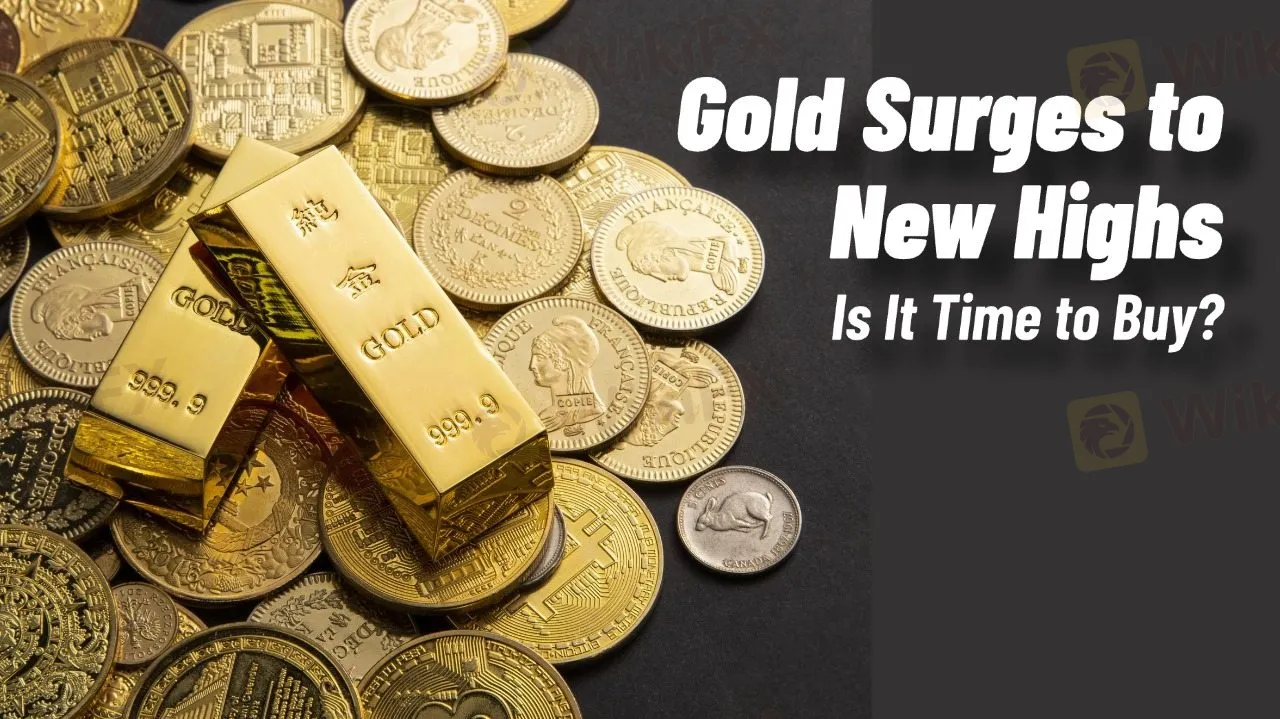简体中文
繁體中文
English
Pусский
日本語
ภาษาไทย
Tiếng Việt
Bahasa Indonesia
Español
हिन्दी
Filippiiniläinen
Français
Deutsch
Português
Türkçe
한국어
العربية
Gold Surges to New Highs – Is It Time to Buy?
Abstract:Recently, gold prices have once again set new records, surpassing $3,077 per ounce and continuing a four-week winning streak. Is It the Right Time to Invest?

Market surveys indicate that surging demand for safe-haven assets has driven gold prices higher. Despite stronger-than-expected U.S. fourth-quarter economic data and a slight decline in inflation indicators, global trade uncertainties remain the dominant factor shaping market sentiment. Meanwhile, central banks continue to accumulate gold, providing long-term support for prices.
Why Is Gold So Volatile?
Gold price fluctuations are influenced by multiple factors. First, escalating global trade tensions have raised concerns about economic stability, prompting investors to seek refuge in gold. Recently, the U.S. announced a 25% tariff on auto imports and plans to introduce a “reciprocal tariff” policy on April 2. With market participants awaiting further details, investor sentiment has been highly reactive. Second, while expectations for Federal Reserve interest rate cuts have diminished, strong central bank demand and increasing ETF inflows continue to support gold prices.
Additionally, the broader precious metals market has gained momentum. Silver prices are nearing their highest levels since 2012, driven by tightening supply as London silver inventories flow into the U.S. Rising lease rates suggest further upward pressure on spot prices. Platinum and palladium have also seen modest gains, reflecting overall demand for safe-haven assets in times of economic uncertainty.
Despite gold's upward momentum, challenges remain. Technical analysis suggests that gold has broken through key resistance levels and entered an upward channel, but the $3,100 mark may pose short-term pressure, requiring further market validation.
For investors, short-term traders may capitalize on price fluctuations, while long-term investors should closely monitor global macroeconomic trends, particularly central bank policies and geopolitical risks. If the Federal Reserve adopts a more accommodative stance, gold could receive additional support. At the same time, evolving trade policies may influence market sentiment, making it essential for investors to stay informed and adjust their strategies accordingly to navigate potential risks and opportunities.

Disclaimer:
The views in this article only represent the author's personal views, and do not constitute investment advice on this platform. This platform does not guarantee the accuracy, completeness and timeliness of the information in the article, and will not be liable for any loss caused by the use of or reliance on the information in the article.
Read more

Webull Launches SMSF Investment Platform with Zero Fees
Webull introduces commission-free SMSF trading, offering over 3,500 US and Australian ETFs, with no brokerage fees and enhanced portfolio tools.

April Fool's Day Scam Prevention Experience Collection
Share your “Forex Fraud Prevention Experience”, win WikiFX points and gold rewards!

How Will the Market React at a Crucial Turning Point?
Safe-haven assets like gold and U.S. Treasuries are surging, while equities face mounting pressure. As this pivotal moment approaches, how will the market react?

Gold Prices Climb Again – Have Investors Seized the Opportunity?
Gold prices have hit record highs for three consecutive days, with a remarkable 19% gain in the first quarter, marking the strongest quarterly performance since 1986. As market risk aversion rises, demand for gold has surged significantly.
WikiFX Broker
Latest News
How Crypto Trading Transforms FX and CFD Brokerage Industry
FCA Warns Against 10 Unlicensed or Clone Firms
CySEC Warns Against 14 Unlicensed Investment Websites
Top Currency Pairs to Watch for Profit This Week - March 31, 2025
Will natural disasters have an impact on the forex market?
Philippines Deports 29 Indonesians Linked to Online Scam Syndicate in Manila
Exposing the Top 5 Scam Brokers of March 2025: A Closer Look by WikiFX
Gold Prices Climb Again – Have Investors Seized the Opportunity?
Webull Launches SMSF Investment Platform with Zero Fees
Australian Regulator Warns of Money Laundering and Fraud Risks in Crypto ATMs
Currency Calculator







